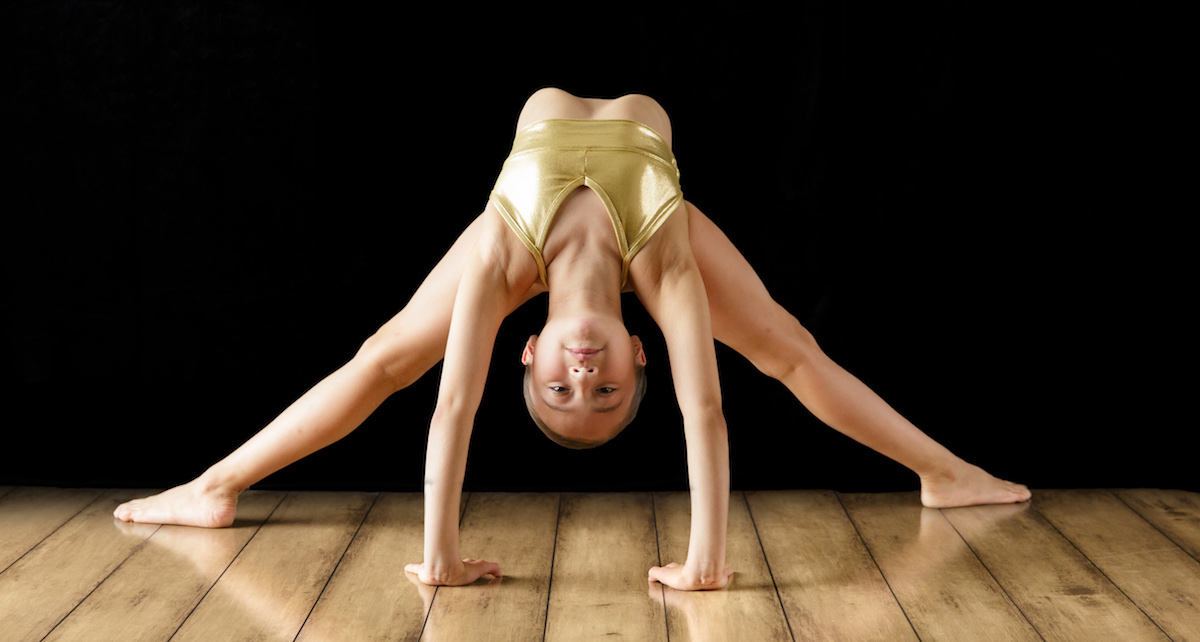These days, it is not uncommon to see acro tricks in winning competition routines, theatre dances, shows such as those by Cirque du Soleil and on popular dance programs like So You Think You Can Dance (SYTYCD). Truth be told, acro is a skill that many dance students want to have and one that may help progress them to the next step in their goals. But acro shouldn’t be practised – and taught – by just anyone. It needs to be taught safely and correctly, to ensure proper body health and a long, successful dance career.

Acrobatic Arts. Photo by Paradox Dance Photography.
Luckily, Acrobatic Arts offers teacher education and certification programs for dance instructors, who will be guided toward implementing a safe and effective acro dance program for their studio’s dancers. And this January, Acrobatic Arts will offer various certification courses and workshops in Australia.
These programs are open to teachers of all levels – from total beginners to experienced instructors who want to enhance their own classes. Leading teachers through this training will help ensure that their students are receiving the proper technique for acro.
“It is important for teachers to understand the correct technique and progressions required to properly perform acro dance movements to avoid both acute and chronic injuries,” Acrobatic Arts Founder Mandy Yip tells Dance Informa. “Dancers must properly prepare their bodies – developing the strength and flexibility required – to aid with both aesthetics and injury prevention, allowing for long and successful dance careers. All too often, teachers – and dancers – skip important steps in development, creating dangerous environments. The Acrobatic Arts Syllabus has set markers at every development stage, so it’s easy to understand when dancers are ready for the next level.”
In creating its syllabus, Acrobatic Arts sought out input from professionals in gymnastics, biomechanics, contortion, hand-balancing, physiotherapy, yoga, ballet, Pilates and experienced acro dance teachers from around the world. The curriculum is suitable for dancers as young as four or five years of age, to professional dancers who may someday dream of performing with Cirque du Soleil, Yip says.

Acrobatic Arts. Photo by Paradox Dance Photography.
“Simple progressions build from one year to the next, helping teachers structure safe programming for their dancers, while teaching tools like ‘Progress Cards’, ‘Stretch of the Month’ and ‘Terminology Colouring Pages’ keep class engaging and fun!” explains Yip. “In addition, innovative technology keeps teachers up-to-date with a video library of over 600 skills, progressions, drills, transitions and so much more.”
With Acrobatic Arts, teachers need not feel intimidated by acro training, as it seems they will be closely guided, with tons of information and resources available to them. And their students will, in turn, be in good hands and be able to safely receive the benefits of acro dance, including increased strength and flexibility, according to Yip.
“Acro dance trains in parallel, allowing for cross-training in dancers who spend so much of their time working in turned out positions,” Yip adds. “This creates more stability in the body and aids in more well-rounded development. Dancers who train in acro dance also gain additional body awareness, especially in inverted positions and balancing, translating to better turning, jumping and partnering.”
Acrobatic Arts is gaining respect throughout the dance industry, from teachers and studio directors around the world, to working professional artists.

Joey Arrigo. Photo courtesy of Cirque du Soleil, ‘Kooza’.
Joey Arrigo, who has performed with Cirque du Soleil’s Kooza, Shaping Sound and on SYTYCD, says, “I admire the fact that Acrobatic Arts places emphasis on technique for the reasons of both safety and aesthetic of artistic acrobatics, while at the same time helping dancers broaden their talents by incorporating acrobatics and increasing their skill set.”
In January, Acrobatic Arts will offer both halves of its syllabus – Module One and Module Two – for teachers in NSW and Qld. A solid understanding of basic ballet and jazz technique and terminology will be the prerequisite for Module One, but no prior experience in acro is necessary. During the course, teachers will learn proper spotting techniques, basic anatomy, acro dance transitions and lesson planning. Module Two will build on those skills and offer more in-depth classes in flexibility, hand-balancing, limbering, spotting more difficult tumbling and advanced acro dance transitions.
To learn more, and for more information on the Australian workshops, visit Acrobaticarts.com.
By Laura Di Orio of Dance Informa.















